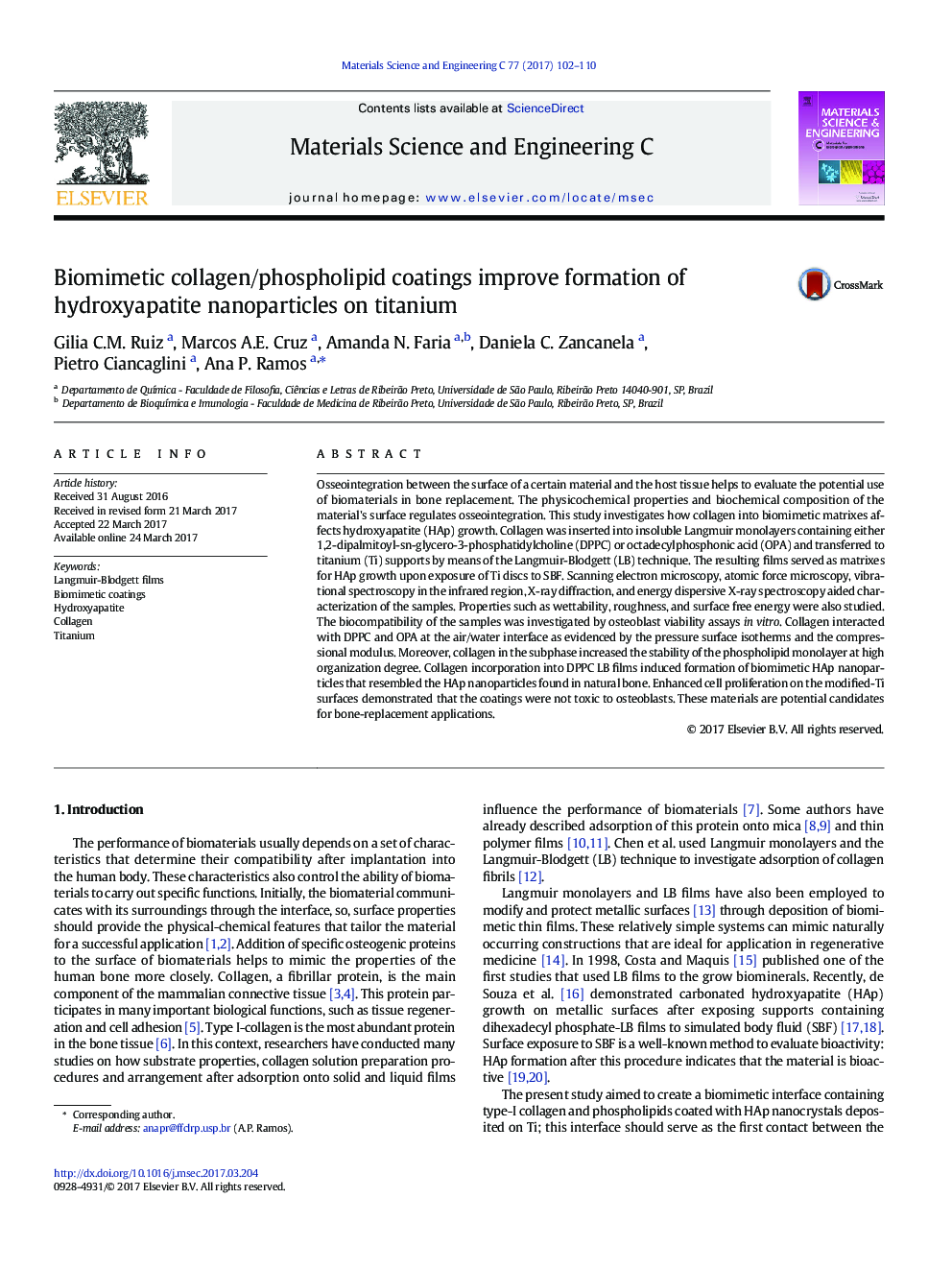| Article ID | Journal | Published Year | Pages | File Type |
|---|---|---|---|---|
| 5434505 | Materials Science and Engineering: C | 2017 | 9 Pages |
â¢Hydroxyapatite continuous films were deposited on Ti discs using a biomimetic approach.â¢The wettability and the free energy of the surfaces were increased after the treatment.â¢Coatings with higher surface area resulted in increased osteoblast proliferation.â¢Potential biomaterials to the reconstitution of the osseous-tissue were synthetized.
Osseointegration between the surface of a certain material and the host tissue helps to evaluate the potential use of biomaterials in bone replacement. The physicochemical properties and biochemical composition of the material's surface regulates osseointegration. This study investigates how collagen into biomimetic matrixes affects hydroxyapatite (HAp) growth. Collagen was inserted into insoluble Langmuir monolayers containing either 1,2-dipalmitoyl-sn-glycero-3-phosphatidylcholine (DPPC) or octadecylphosphonic acid (OPA) and transferred to titanium (Ti) supports by means of the Langmuir-Blodgett (LB) technique. The resulting films served as matrixes for HAp growth upon exposure of Ti discs to SBF. Scanning electron microscopy, atomic force microscopy, vibrational spectroscopy in the infrared region, X-ray diffraction, and energy dispersive X-ray spectroscopy aided characterization of the samples. Properties such as wettability, roughness, and surface free energy were also studied. The biocompatibility of the samples was investigated by osteoblast viability assays in vitro. Collagen interacted with DPPC and OPA at the air/water interface as evidenced by the pressure surface isotherms and the compressional modulus. Moreover, collagen in the subphase increased the stability of the phospholipid monolayer at high organization degree. Collagen incorporation into DPPC LB films induced formation of biomimetic HAp nanoparticles that resembled the HAp nanoparticles found in natural bone. Enhanced cell proliferation on the modified-Ti surfaces demonstrated that the coatings were not toxic to osteoblasts. These materials are potential candidates for bone-replacement applications.
Graphical abstractDownload high-res image (72KB)Download full-size image
